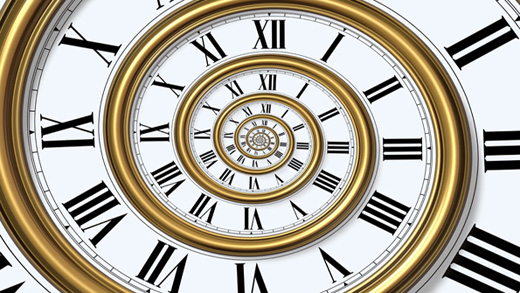by Arjuna Ardagh: Why in Radical Releasing do we stick to the words and the feelings, and not invite in pictures and the story?

It is a very simple thing to understand. Understanding why we operate in this way is not only going to answer your question, but it also gives you an insight into how life works in a much broader way.
Have you had the experience sometimes that you get an e-mail from someone who is mad at you, and it riles you up? Then you get in your car, you drive off to do some shopping, someone cuts you off in traffic, and that is irritating, too. And then you get to the grocery store, the person at the checkout stand is in training, cannot figure out how to use cash register, and that is irritating, too. Slowly, one after another after another, your whole day seems to be full of irritating things.
On the other hand, if you are really in love, or even if you have great sex, you walk into the world and everything looks beautiful, fantastic, gorgeous. When the flowers first come out in spring, you are living in a world of unparalleled beauty.
When I got back from Europe at the end of October, I caught a cold on the flight. I was not sick, but I could feel my body was fighting a respiratory infection. You probably know, from Chinese medicine, that the lungs are the seat of both sadness and joy. When your lungs are weak, you feel sad. So I was feeling grief all day long, for about a week. I just felt so sad. “Our cat is getting older…” Everything was fuel for the sadness.
We are constantly projecting internal filters. In Awakening Coaching we call them “Points of View.” It is like you are wearing pink glasses: you see a pink world. When you put on orange glasses you see an orange world. We are doing this all the time. We illustrate internal states with external situations. You feel irritated, and suddenly the world is filled with irritating things. You feel sad, and now here is a world full of sad things.
Then we want to start taking action, based upon the perception of an irritating world, or a sad or scary or romantic or crazy world. You feel angry, then you decide “I’m going to show those bastards… I’m going to show them, once and for all, who’s the boss here.” Or you feel sad. You start calling people, “You know, I just want to tell you (sniffle), I really love you, and I’m so sorry about all the mean things I’ve done.”
My son says, “Dad, are you okay?”
“Yeah, I just wanted to tell you (sniffle sniffle), that I really, really love you, and that I’m so, so sorry (sob), that I haven’t been the perfect father to you.”
“Dad, what’s going on with you?”
“I don’t know.”
We act stuff out. We think that our perception of the world is real. We think that we are living in an orange world, and we forget we are wearing orange glasses.
This is the wisdom upon which Radical Releasing is based. There is a Tibetan Buddhist text called The Heart Treasure of the Enlightened Ones, written in the 19th century by Patrul Rinpoche. He says:
Don’t follow after the object of hatred; look at the angry mind.
Anger, liberated by itself as it arises, is the clear void;
The clear void is none other than mirror-like wisdom.
Later he says:
Don’t hanker after the object of desire: look at the craving mind.
Desire, liberated by itself as it arises, is the bliss-void;
This bliss-void is none other than all discriminating wisdom.
Patrul Rinpoche says that if we can withdraw our attention from the external world, upon which we are projecting, and become aware of the pink or the red glasses, only then we have discovered the foundation of maturity. That sums up what we mean by maturity, in my view: the ability to be aware of our state. When we are aware of our state, we realize that the world may still be looking orange to us, because we are still wearing orange glasses, but now we can say, for the first time, “The world looks orange, but now I understand it is not really an orange world. It is a neutral world, because I have my orange glasses projecting onto it, so it appears to be an orange world.” That is the key.
Radical Releasing is a very simple process. These states, like irritation or sadness, only stay stuck because they are being partially experienced, and partially repressed. We repress things because at some point it seemed like feeling that emotion could be so overwhelming that it would destroy us.
People sometimes say to me in coaching: “If I start to cry now, I’m going to cry forever. If I really let myself feel the sadness, I will drown in an ocean of tears.” When I lived in Seattle, I had a coaching client whose sister had been murdered in a parking lot, with him watching. “I cannot feel my anger,” he said. “If I let myself feel anger, I will go out of control, I will do something I will later regret terribly.” People have this feeling: “If I fully experience this feeling, I will never get out of it, and it will overwhelm me completely.” Consequently we do not let ourselves fully experience strong feelings, but only partially. And as a result, they stay locked in place, they cannot fully move through. A small child gets completely angry for a few moments, and it is gone. We do not do that. We half experience it, and half repress it, so it stays stuck.
The first key is to not follow the story. When we follow the story, we are going to get lost. We need to be able to come back to the pure frequency of anger or sadness or desire, now without any external cause.
The second key to getting free is to take off the resistance. When you remove the resistance, that frequency will inevitably pass through, and dissolve back into the natural state. That is all we are doing with Radical Releasing: feeling frequencies without the story to completely that they dissolve.
When we follow the story we go into drama. That is what some kinds of psychotherapy focus on. What did your mother and father say, how did that affect you? That is sometimes very necessary: to honor the story. With Radical Releasing we are ignoring the story, and going straight to the frequency. This is not psychotherapy, but a mystical practice. The aim is simply to remove the resistance, so it can move through. We remove the resistance through amplification. When you amplify, and amplify, and amplify something to the absolute maximum, you cannot resist it at the same time. It is impossible. There is always some mixture of expression and resistance. When you fully amplify, you cannot also resist. When you take any frequency to the maximum, and then drop it back into infinite consciousness, that wave dissipates back into the ocean, and it is gone. It can now rise and fall, but the resistance is gone, so it no longer exists as a point of view, or perceptual distortion: you no longer see the world as irritating.
When we use a story or images to evoke feelings, we are buying into the idea that the world is making us angry or sad. Then we enter into a world of cause and effect. In physics this is the Newtonian model. A causes B, B causes C. When we simply come back to the frequency and ignore the external cause, we enter a quantum universe, when nothing is causing anything else. Everything is arising, and dissipating, out of a unified field, out of the source of all things. Your thoughts and feelings are arising and dissipating, external events are arising and dissipating. Everything is arising and dissipating simultaneously out of the same source.
In a Newtonian universe, the apple falls from the tree onto a dead branch on the ground, the branch swings up, it sends an acorn flying through the air, the acorn hits a squirrel… A causes B, B causes C, C causes D. That is the Newtonian universe of cause and effect. Action and reaction. In the quantum universe the apple falls from the tree, as an event out of time, arising and falling, appearing and disappearing out of nothing. The apple hits the branch: another event arising and disappearing out of nothing. Everything is arising and disappearing. Every frame of the movie is new. In a quantum universe, there is really no cause and effect. Cause and effect are a type of illusion, created by time and thought. It does not really exist. In this very moment, there is just the arising and dissipating.
Inside time, we live in cause and effect. Outside of time there is no cause and effect, just spontaneous appearance and disappearance.
Imagine that you freeze-frame a movie. When you freeze-frame, you stop time. Everything is there: the apple is there, the branch is there, the acorn is there, in the frozen frame. In the next frame everything is also there, with slightly changed position. When you put those frames together, you create time. When you create time, you create cause and effect.
Of course we all have to know how to operate in time, we understand time, but freedom only exists out of time. Creativity also exists out of time. Making creative fresh choices, setting intentions to have life flow the way that we want it to, all of that happens outside of time. It cannot happen within time. You discover freedom by freezing time.
That is what you do when you practice meditation or self-inquiry: you return back to a dimension where there is no time. Now the world is a movie, going on somewhere, but you are in the timeless. Out of the timeless you can recreate whatever you want, in every moment. You can send fresh impulses. There is really no “I” there, so better to say that fresh impulses spontaneously arise: fresh, creative, alive, loving, humorous, beautiful impulses arise on their own, spontaneously, out of nothing.
Chameli and I have been married for 14 years. We go through our ups and downs, like everybody does, but every day we step together out of time. We wake up in the morning, we brush our teeth, go to the bathroom, and so on. And then we sit opposite each other and we perform a “puja.” We bow to each other, and we say:
I start fresh today,
I let go of everything before this day,
I start fresh.
I love you,
I am grateful to be with you,
It is such an incredible life.
Today I commit to starting fresh,
To see you with fresh eyes and to not take anything for granted.
So every day is the first day of our relationship. That requires stepping out of time into the timeless. Only when you step into the timeless, everything becomes possible. When you step out of time, you step out of cause and effect, which means you step out of the thought that “This is what has happened for the last fifty days, and so the same thing is going to happen today.” You step out of that thinking, so anything can happen today. Anything. It is completely new. A brand new, fresh freeze-frame.
That is the essence of being creative. Instead of recycling what has always happened before, now you are doing the things, and saying the things, that are coming directly out of the timeless.
That is what Radical Releasing does: it starts from a repeating pattern, thoughts like “I’m not good enough… Life is hard… I have nothing to say… no one likes me.” Most of these statements are sad and depressing. So we take these thoughts, we build them up, to remove the resistance, and then we drop them back into the timeless. In the timeless, time collapses, cause and effect collapses. That is why we do not want to illustrate these points of view with a story, because the story recreates time. Everything collapses back into the timeless, and out of the timeless fresh impulse can arise which are generally humorous, creative, and usually solution-based.
I have an average life, in terms of success and failure. Bad things happen, and good things happen. But what my life also has, that I am infinitely grateful for, is that my life is appearing and disappearing all the time, out of the timeless. Life appears, it wobbles a little bit, and then it disappears again into the timeless, and is recreated again. It is like I live a succession of mini-lives, each day is its own mini-birth and mini-death. You can keep starting over, getting reborn, fresh, and new, you keep rebooting. What happened yesterday is irrelevant. You are starting fresh today.
This is why we do not bring story to Radical Releasing, because the whole point is to collapse time. If you brought a story in, you would be trying to collapse time within time. You have to freeze time so you can come back to the pure frequency, only then you can dissolve the frequency, and see things with fresh eyes.
That was a long answer to a simple question! Does that make any sense, or was it just too weird and esoteric…?









































